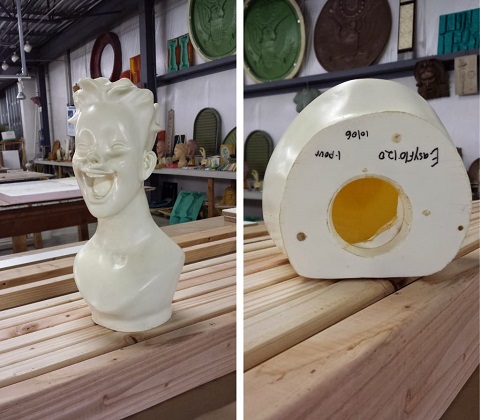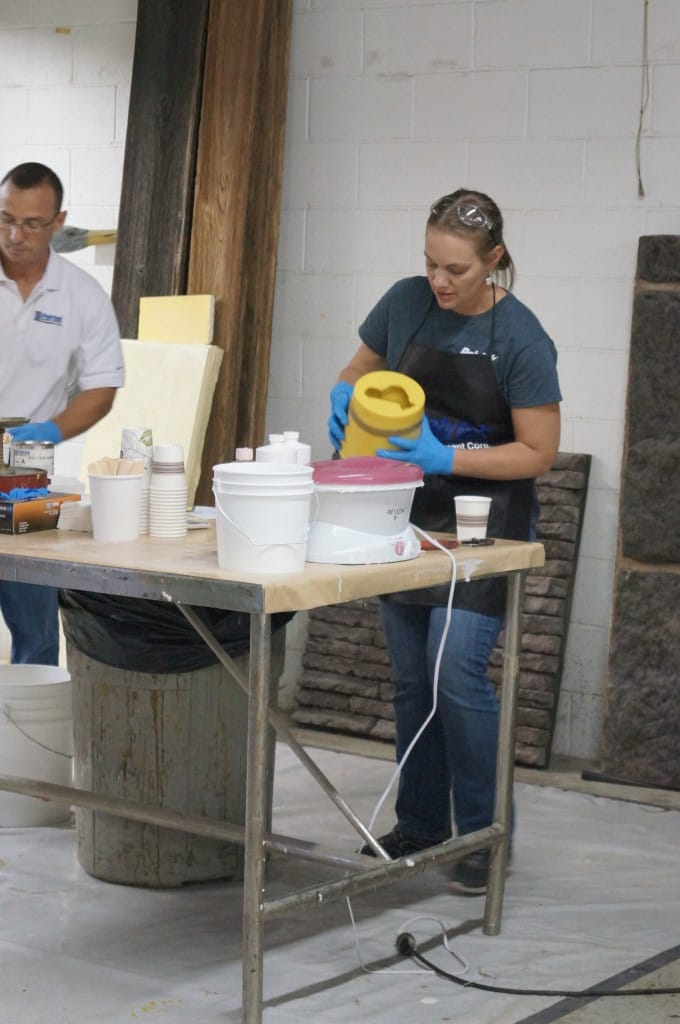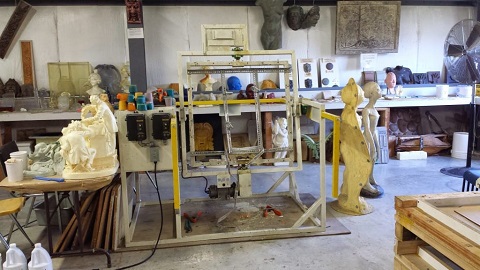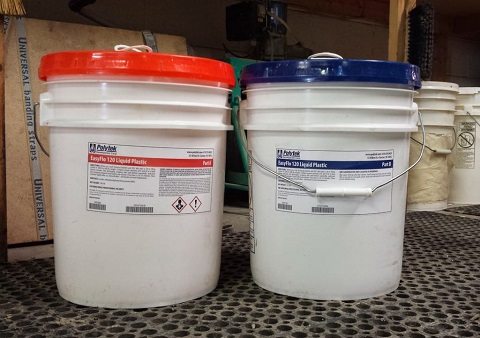Slush Casting Resin to Make Hollow Parts

What is Slush Casting?
Casting material is manually “slushed around” in the mold, creating a thin layer, which results in a hollow, lightweight casting [example, right].
Advantages
- Lightweight
- Uses less material
Disadvantages
- Time consuming
- Requires manual labor
- Casting wall thickness can vary
Typical Uses
- Props and displays
- Art objects
- Bonded bronze pieces
- Prototypes
Our Terminology: The difference between slush casting and rotational casting is that rotational casting is done by a rotational casting/molding machine. The rotational casting machine allows the walls of the castings to be fine-tuned for thickness and consistency. Slush casting is more common for quick prototypes or samples and is not typically used for production casting.

^Slush casting demonstration during one of our workshops

^Rotational Casting Machine
Suitable Resins for Slush Casting
Not all casting resins are ideal for slush casting. Generally, this process is not conducive for resins with working times longer than five minutes. A product like our Poly 1512 polyurethane plastic, which has a working time of 22 minutes, would require over an hour of manual rotation. It can be done, but is unrealistic.
EasyFlo 120 Casting Resin (a polyurethane plastic) is the option in our product line-up that we most often recommend for this process. It has a mix ratio of 1A:1B, a working time of 2 – 2.5 minutes, and a demold time of 15 – 30 minutes.

EasyFlo 120 is designed to gradually solidify over its working time, as opposed to “snap-set” (like the curing characteristics of EasyFlo 60). This gradual thickening over the last 30-45 seconds of the working time helps to provide an even coat.
This resin typically requires 5 – 10 minutes of manual rotation. If multiple coats are being applied, allow ~10 minutes before applying the next coat (enough time for the resin to “gel” and not pull away from the mold). When the final coat has been applied, allow 20 – 30 minutes before removing the casting from the mold.
EasyFlo 120 can be colored using PolyColor Dyes [available in Black, Brown, Blue, Green, Red, Yellow, and White].

How to Slush Cast
Slush casting can be done in an open or closed mold. A small amount of resin is poured into the mold and then the mold is manually rotated in all directions until a thin layer of resin coats the mold, creating a hollow part.
We suggest using enough resin to create a ~1/4″ thick casting, which can require 2 to 3 coatings. To determine how much resin needs to be used, estimate the surface area of the mold and multiply by the thickness of the layer you intend to cast. Take this number and divide by the specific volume of the casting resin. This will result in the number of pounds needed for the casting.
Example:
8.0″ L x 8.0″ W x 0.125″ (thickness of the first layer of resin)= 8.0 in³.
8.0 in³ ÷ 26.9 in³/lb (the specific volume of EasyFlo 120 liquid plastic) = ~0.29 lb
Back-Filling Hollow Parts
Hollow slush-cast parts are often backed with lighter weight or less expensive materials, such as foam. Both rigid and flexible foams are frequently used:
- Rigid PolyFoam
- Flexible PolyFoam
Would you like to discuss your project with a Polytek Technical Support staff member?
Call us at 800.858.5990.
Email us at sales@polytek.com.